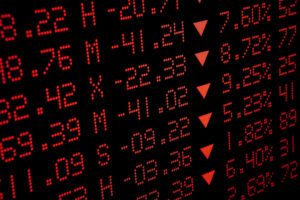Goldman Capitulates, Cuts S&P Price Target to 4,900, Warns of ‘Recession Downside’ To 3,600
The comments below are an edited and abridged synopsis of an article by Tyler Durden
There’s a divergence between two prominent investment banks: Morgan Stanley and Goldman.
In November, Morgan Stanley predicted that the S&P would close the year at 4,400, some 6% lower, as a result of multiple contractions emerging from higher yields. It urged clients to exit the US market, to focus instead on Europe and Japan. So far it has been correct, with the S&P dropping below the bank’s year-end price target.
Goldman’s David Kostin, who refuses to acknowledge bearish catalysts, said that the S&P 500 will climb by 9% to 5,100 at year-end 2022, “reflecting a prospective total return of 10% including dividends.”
Durden wrote that “this entire note boils down to two things: The Fed model, i.e., rates are so low so investors have to buy stocks… and FOMO, or there is nothing else all that money sloshing around can buy.”
Fast forward three months when neither of these is the case. Rates (especially real rates) surged as rate-hiking cycles took hold on Wall Street, derailing any speculation that stocks are cheap based on yields and equity risk premia, and with many markets sliding into a correction or bear market, one can kiss any FOMO goodbye for the near future. As a result, while bears such as Bank of America and Morgan Stanley are taking victory laps (with both seeing their year-end price targets hit just three weeks into the year), Goldman once again found itself in the uncomfortable position of being one of Wall Street’s biggest cheerleaders (only JPMorgan is more permabullish) right into a slump.
Durden discusses Goldman’s forecast in depth, and concludes that if the US economy tips into a recession—a question that Goldman’s investors have increasingly been asking—the typical 24% recession peak-to-trough price decline would reduce the S&P 500 to 3,600.

